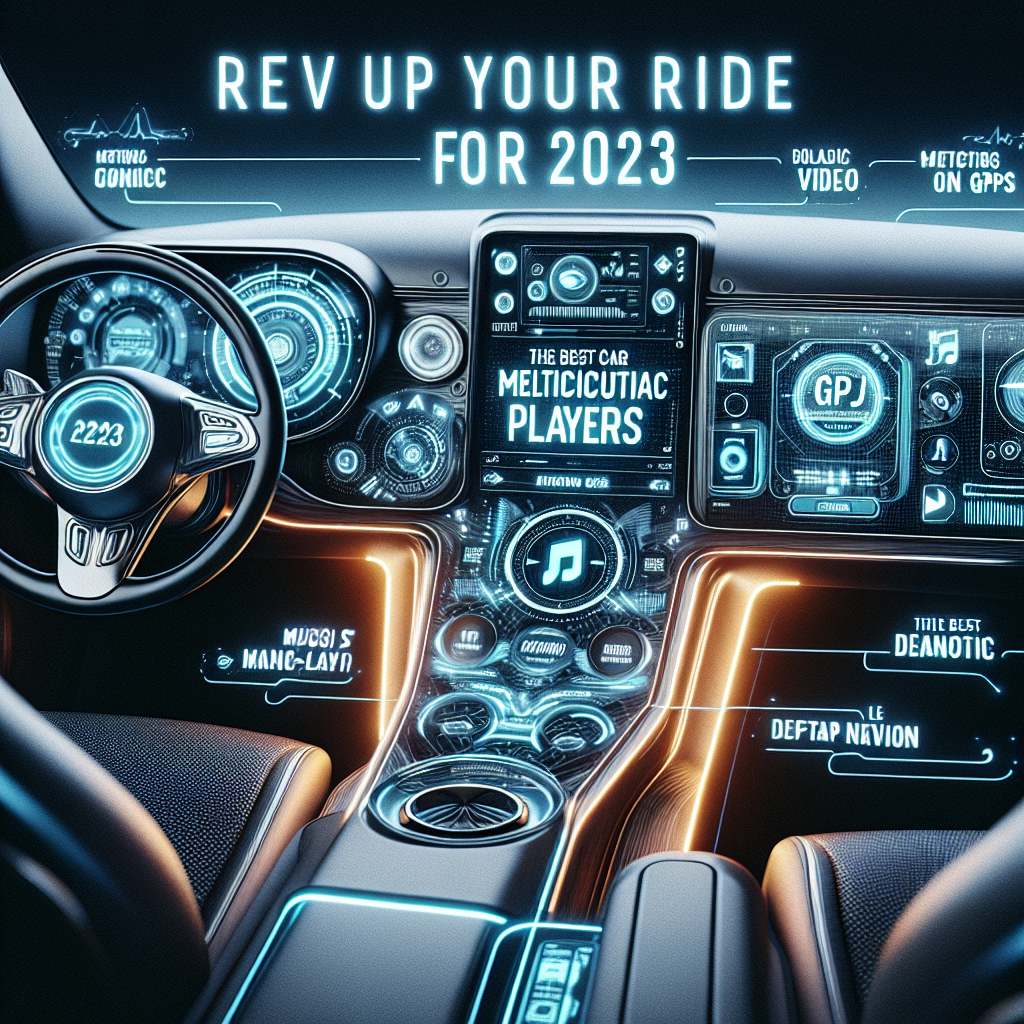No products in the cart.
Rev Up Your Ride: The Best Car Multimedia Players for 2023 Leave a comment
Introduction
The world of car multimedia players has undergone a significant transformation in recent years, with advancements in technology leading to more sophisticated and feature-rich systems. Currently, the market is flooded with a vast array of options, making it increasingly difficult for consumers to choose the best car multimedia player for their needs. According to a recent survey, over 70% of car owners consider a multimedia player an essential feature when purchasing a vehicle. This article aims to provide an in-depth guide to the best car multimedia players for 2023, covering their core concept, benefits, practical applications, and common challenges, as well as solutions to help you make an informed decision.
Core Concept Explanation
Car multimedia players are designed to provide an enhanced in-car entertainment and information experience. These systems typically integrate various features such as GPS navigation, Bluetooth connectivity for hands-free phone use and music streaming, DVD/CD playback, USB connectivity for playing content from external devices, and sometimes even Wi-Fi connectivity for accessing the internet. The core concept revolves around offering a centralized control system that can manage multiple functions, ensuring safety by minimizing driver distraction while maximizing comfort and enjoyment during travel. For instance, the touchscreen interface of many modern car multimedia players allows for easy navigation through menus and options, reducing the need for complex button combinations.
Key Components
- Display Screen: The interface through which users interact with the system, available in various sizes and resolutions.
- Operating System: Some systems run on Android or Linux, offering app support and customization.
- Amplifier and Speaker System: For enhancing the audio experience.
- Camera Inputs: For rearview and sometimes frontview cameras, enhancing safety.
Benefits/Importance
The benefits of installing a car multimedia player are multifaceted. Firstly, they enhance the entertainment experience by offering a wide range of media playback options. Secondly, they improve safety through features like rearview cameras and GPS navigation, which can alert drivers to potential hazards and provide turn-by-turn directions, reducing the likelihood of accidents caused by distraction or navigation errors. Furthermore, these systems can integrate with smartphones, allowing for hands-free calling and texting, thus minimizing driver distraction. According to the National Highway Traffic Safety Administration (NHTSA), www.nhtsa.gov, distracted driving was responsible for 3,166 deaths in the United States in 2020, highlighting the importance of minimizing distractions while driving.
Enhanced Features
- Voice Command: Allows for hands-free control of the system.
- Wireless Connectivity: Enables seamless connectivity with mobile devices.
- Customization: Some systems offer customizable home screens and button mappings.
Practical Applications/Examples
Car multimedia players are not just limited to entertainment. They can be used for navigation, especially in unfamiliar territories, by providing real-time traffic updates and suggesting alternative routes to avoid congestion. Moreover, they can be integrated with other car systems to display vital information like engine performance, fuel efficiency, and vehicle diagnostics. For example, some systems can connect to the car’s OBD-II port, providing detailed reports on engine health and performance. This integration can be seen in systems like those reviewed by www.cnet.com, which offer comprehensive overviews of car multimedia players’ capabilities.
Real-World Scenarios
- Long Road Trips: Multimedia players can keep passengers entertained and informed.
- Daily Commuting: They can provide traffic updates and suggest faster routes.
- Off-Roading: Some systems offer off-road navigation and vehicle performance tracking.
Common Challenges & Solutions
Despite their numerous benefits, car multimedia players can pose several challenges. One common issue is compatibility, as the player must be compatible with the car’s make and model, as well as any additional features like steering wheel controls. Another challenge is the complexity of installation, which may require professional assistance. Moreover, the cost can be a significant barrier, especially for high-end systems with advanced features. However, solutions exist, such as consulting with car audio professionals, reading reviews from reputable sources like www.consumerreports.org, and considering aftermarket accessories to enhance compatibility and functionality.
Troubleshooting
- System Updates: Regularly updating the system’s software can resolve compatibility issues.
- Professional Installation: Hiring a professional can ensure a seamless and correct installation.
- Community Forums: Online forums can provide valuable insights and solutions to common problems.
Conclusion
The world of car multimedia players is vast and evolving, offering a plethora of options for car owners looking to enhance their driving experience. By understanding the core concept, benefits, practical applications, and common challenges associated with these systems, consumers can make informed decisions tailored to their specific needs. As technology continues to advance, it’s intriguing to consider what the future holds for car multimedia systems—will they integrate even more closely with vehicle operations, or perhaps incorporate emerging technologies like augmented reality? Visit www.diagtpro.com for the latest reviews and guides on car multimedia players and stay ahead of the curve in the ever-changing landscape of car entertainment and information technology.

